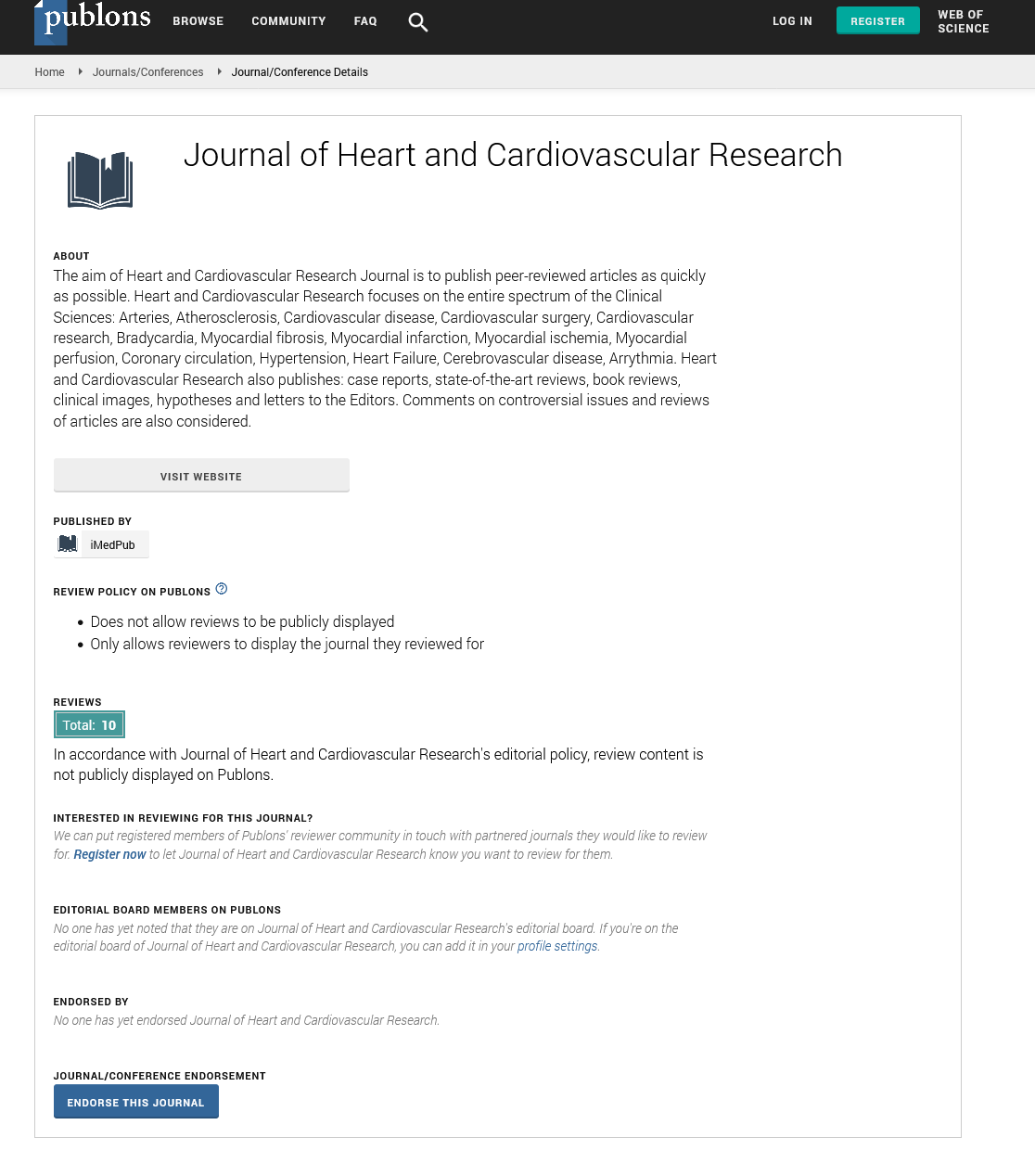ISSN : ISSN: 2576-1455
Journal of Heart and Cardiovascular Research
Abstract
ECG in myocardial infraction Clinical approach
Ischemia occurs when part of the heart muscle, the myocardium, is deprived of oxygen and nutrients. Common causes of ischemia are:
• Narrowing or obstruction of a coronary artery.
• A rapid arrhythmia, causing an imbalance in supply and demand for energy.
A short period of ischemia causes reversible effects: The heart cells will be able to recover. When the episode of ischemia lasts for a longer period of time, heart muscle cells die. This is called a heart attack or myocardial infarction. That is why it is critical to recognize ischemia on the ECG in an early stage.
Signs and symptoms of myocardial ischemia:
• Crushing pain on the chest (angina pectoris), behind the sternum, often radiating to the lower jaw or the left arm
• Fear of dying
• Nausea
• Shock (manifesting as paleness, low blood pressure, fast weak pulse) shock
• Rhythm disturbances (in particular, increasing prevalence of ventricular ectopia, ventricular tachycardia, AV block)
Diagnosis of MI on ECG:
1. The diagnosis of acute myocardial infarction is not only based on the ECG.
2. Elevated blood levels of cardiac enzymes (CKMB or Troponin T) AND
3. One of the following criteria is met: a. The patient has typical complaints,
a. b. The ECG shows ST elevation or depression.
b. c. pathological Q waves develop on the ECG
c. d. A coronary intervention had been performed (such as stent placement)
4. So the detection of elevated serum cardiac enzymes is more important than ECG changes. However, the cardiac enzymes can only be detected in the serum 5-7 hours after the onset of the myocardial infarction. So, especially in the first few hours after the myocardial infarction, the ECG can be crucial.
Author(s): Furkan khurshid
Abstract | PDF
Share This Article
Google Scholar citation report
Citations : 34
Journal of Heart and Cardiovascular Research received 34 citations as per Google Scholar report
Journal of Heart and Cardiovascular Research peer review process verified at publons
Abstracted/Indexed in
- Google Scholar
- Sherpa Romeo
- China National Knowledge Infrastructure (CNKI)
- Publons
Open Access Journals
- Aquaculture & Veterinary Science
- Chemistry & Chemical Sciences
- Clinical Sciences
- Engineering
- General Science
- Genetics & Molecular Biology
- Health Care & Nursing
- Immunology & Microbiology
- Materials Science
- Mathematics & Physics
- Medical Sciences
- Neurology & Psychiatry
- Oncology & Cancer Science
- Pharmaceutical Sciences
